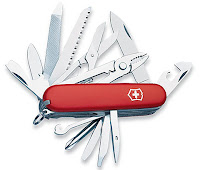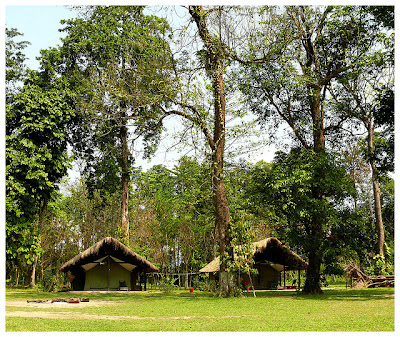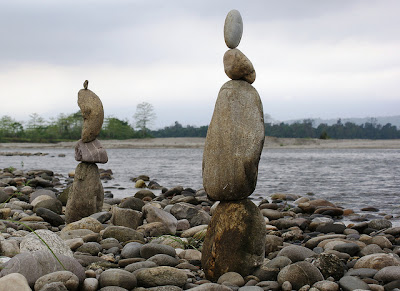Under the cover of clouds lies this green and wet city of Meghalaya named as Cherrapunjee. It is in the terrain of East Khasi Hills district, at around 4,800 feet above the sea level with its floor always remaining wet. Just 60 Km away from the capital city of Shillong, located in the latitude of 25.30◦ N and longitude of 91.70◦ E and at an elevation of 1484 m above sea level, this city of Cherrapunjee is always engulfed in clouds Standing 600 meters above the surrounding valleys, viewing the plains of Bangladesh, Cherrapunjee lies in the southern part of East Khasi Hills, which is at Indo-Bangladesh border. Cherrapunjee has rich physical features; it gets rain throughout the year, which keeps the surrounding cool and green. The continuous rain give rise to numerous waterfalls which are really pleasing to our eyes and on the other side it has many caves, which will certainly make our blood run cold while caving.
The original name of Cherrapunjee is
Sohrapoonjee. The natives of this place call Cherrapunjee as Sohra. Sohra got its name from Soh and rah, in the loacal Khasi language "Soh" means fruit and "Rah" means carry. The people of Cherrapunjee bring fruit from the neighboring villages to sell it in Sohra market. The head village from where the tribal chief rules his terrain is referred as 'Poonjee' in local language. . That is how Cherrapoonjee got its name as Sohrapoonjee. The Britishers could not pronounce Sohrapoonjee, so they named it as Cherrapoonjee. Secondly as the place has orange groves all around, it got the name as Cherrapunjee, which means the land of oranges.
Lying on the lap of East Khasi Hills, this place is truly nature's blessing as it experiences only monsoon season throughout the year with lush green surroundings. It receives an average annual rainfall of 11,777 mm. For receiving the highest rainfall of 22,987 mm in a year between August 1860 and July 1861 and for highest rainfall of 9,300 mm in the month of July 1861, it proudly holds two Guinness world records respectively. The amazing fact about rainfall in Cherapoonji is that, it rains mostly in the night, so it hardly affects the daily routine. As it receives both southwest and northeast monsoonal winds, this place experiences monsoon season throughout the year. The average temperature of the place is 11.5◦C in January and 20.6◦C in July. The annual mean temperature is 17.3◦C. The upward movement of air from lower altitude to higher altitude enhances the precipitation process as water vapor get condensed into water droplets quickly, creating clouds, which results in high humidity.
The reasons for plentiful rain in Cherrapunjee are:
1.Elevation: Due to its high elevation above the sea level, the atmosphere is quite cool here and when the moisture laden air blows above this valley, it gets condensed and form clouds, which results in rain later.
2.Monsoons: The second reason for heavy rainfall is the continual supply of monsoon winds loaded with moisture, for six months through this land.
This place is famous for its orange groves, orange honey and the limestone caves. Best quality of oranges and pineapples are produced here. These oranges are the ancestors of the famous Nagpuri oranges. It is the proper place for the botanists as it houses rare orchids, ferns and moss. Very unusual "
Living Root Bridges", which last hundreds of years pull the tourists towards this destination.
The place is mostly inhabited by the Khasi people, having unusual social system where the females are the dominant members of the family or the head of the family is female and the family name is derived from maternal side. The native language of this place is Khasi, and the people of this place are mostly Christians. For writing Khasi people use Roman script.
Each and every state or place of India has its own specific traditional attire, so how come Cherrapunjee be without that.
Jymphong is the traditional dress for men, which is a long sleeveless coat without collar, tightened to the body with the help of laces in front. They wear Jymphong and Sarong with an attractive band around waist along with a turban on their head in various ceremonies.
Jainsem and Dhara are the traditional attires of the females. Both of them are made of several pieces of cloth, which gives the body a cylindrical shape. A crown of silver or gold with a spike or peak on their forehead adds on to their beauty in some ceremonial occasions. Jainsem has two pieces of material tied at each shoulder whereas Dhara has only one piece of material to be tied on each shoulder. The dressing styles of Khasis are quite influenced by the Welshs. Cherrapunjee and Shillong have become easily accessible to the foreign nationals through the land entry point at Dawki or Tamabil from Bangladesh.
The amazing fact about Cherrapunjee is that, though it rains throughout the year , there is an acute shortage of potable water during the winter months when there is less rain or no rain. The main reason for this is that there is no absorption of water underground due to its deforested hills made of limestone, which allows free fast flow of rain water without any hindrance.
Economy:
- The occupation of most of the people of Cherapunjee is mining. They usually mine coal, limestone and sand in unplanned ways using unscientific methods, which is leading to poor quality of potable water in some places.
- Though it rains throughout the year the economy is not agrarian, as the top soil gets washed away due to heavy rains, the soil is not rich in humus. Due to this reason, people are encroaching into the forest.
- Due to its scenic beauty and still being pollution free, this place is gaining popularity among the tourists, so the economy of the place depends on tourism too.
- In 1960 Mawmluh Cherra Cements Ltd, a Government of India undertaking started to develop this place with the available resources of limestone and coal mineral. This factory gave employment opportunity to the youngsters of this place and was able to remove poverty by transfusing money into the local economy.
The locals of the place are mostly dependent on Government jobs, as the jobs in private sector go to the nationals of Bangladesh and Bhutan, who illegally enter India through the border as they become available in very low wages.
Flora and Fauna of Cherrapunjee:
The land of continuous rain Cherrapunjee, having lush green surroundings, is holding enormous natural treasures within itself to be proud of. The varieties of flora and fauna in Cherrapunjee are the lush green canopies standing on the mountains and in the valleys, rocky hills, and untamed rivers. Cherrapunjee is considered as botanists' paradise as it has various collections of ferns, moss plants, dense woody forest and having a treasure of colourful and exceptional variety of orchids. The place is well known for the orchards of pineapple and oranges too.
You can catch the sight of varieties of birds in and around Cherrapunjee. Winters is the best time for birding as the birds from Siberia, China, Tibet and from other parts of Himalayas, migrate to this place for their comfortable stay. The resident birds are hornbills, king vultures, eagle,teals, quails etc. The animals which can be traced in this hilly region are elephants, tigers, leopard, jackal, bear, golden langurs etc.
Market in Cherrapunjee:
The market put up in Cherrapunjee is not like the markets of other places. Here the market place becomes the point of socializing other than buying and selling of different things. There are two types of market Iewbah and Iewrit meaning big market and small market respectively. Iewbah is put up once in 8 days and Iewrit is held on the 4th day of Iewbah.
The main market in Cherapunjee is Cherra bazaar, stocked with different handicraft items made by the locals and orange honey, along with daily usable items.
There are different sections for the fruits, vegetables, meat, fish, iron implements for agriculture, bamboo baskets, bakery products and various other things of human need. The market scene is really colorful, with different colored consumer products along with customers in different colored rain wears and umbrellas adding to the beauty of the market place.
On the market days the roads are full of traffic with crowded buses and Ambassador taxis moving through the roads in snail pace, shuttling passengers to and fro from nearby villages to the market and back. The tourists going to Cherrrapunjee must visit the market place on the market days to know better about the lifestyle of the locals there.
The strange thing about the place is that there is 100% attendance in all the offices on these market days. On other days the offices are taken care by handful of workers and they are hardly bothered to get full salary at the end of the month. By these entire scenes one can understand the reason of slow pace growth of the place.
Festival: Cherapunjee Indigenous Festival: This 4 day long festival is held every year from 8th to 11th of December in Laitmawsiang of Cherrapunjee. The main intention to hold this festival is to highlight the traditional art and culture of Meghalaya. For maximum participation, there are free bus services from Shillong to Laitmawsiang after each hour. For the visitors coming from across India, there are facilities of temporary accommodations nearby, in huts and tents.
As music is in the blood of North Eastern Indians, it holds National Level Rock competition on 10
th of December of every year, where the prize money is Rs 150,000 for the winner and 30,000 for the runners up.
To keep the visitors of different age groups engaged and have fun, there are various competitions held along with Archery, the traditional sport of North East. Shopaholics, foodies and admirers of art and craft get hooked to this place due to Traditional Kashi Exhibition and sale of different art and craft materials and traditional food joints. If you have any requirement of herbal medicines, you can grab them from the herbal medicine stalls put up there. This is the biggest festival of Meghalaya.
Cherapunjee is 11.7 Km away from Mawsynram, 60 Km away from the state capital
Shillong and 181 Km from the Assam Capital Guwahati.
For Attractions of Cherrapunji Visit
www.hoparoundindia.com










.jpg)
